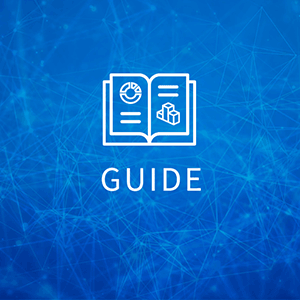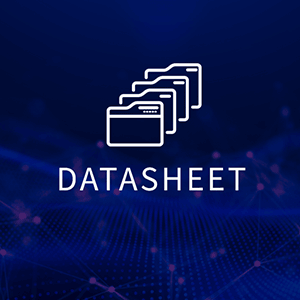In our last FinOps blog, we discussed how to make FinOps bring financial accountability to the cloud. Our own FinOps journey began when our cloud expenditure began increasing at an unexpected rate—but our head of engineering couldn’t explain if this was healthy or wasteful spend.
You’ve probably heard the phrases talk the talk and walk the walk. Flexera has been “customer one” for a variety of our solutions for quite some time. Many of the features in our solutions are the result of us asking ourselves how we can make the functionality even more useful, both to Flexera, and more important, to you.
The same holds true for our FinOps journey and our Cloud Cost Optimization (CCO) application. We established our FinOps team to understand and optimize our spend—and make sure every dollar spent on cloud is driving real ROI for Flexera, and ultimately for our customers.
No one is perfect
We identified several gaps in our existing processes, many of which may parallel those in your organization. The team originally assigned to manage our cloud discounts was stretched thin and didn’t have the bandwidth to stay on top of everything on a frequent basis. We also weren’t adequately measuring the success of our savings programs, so we had no idea if we were taking full advantage of the discounts available to us. (Spoiler alert: We weren’t.)
Our cost approval process also needed help. It wasn’t well defined, so we lacked clear accountability and a holistic review of cloud costs. Flexera One has a very powerful policy engine that we exploit to control our cloud estate. And though we were leveraging some cost-control policies, they were inconsistent across teams.
When teams wanted to know more about discounts and optimization, they didn’t have a dedicated source to turn to. And even though we had great visibility into our aggregated spend, we weren’t taking advantage of the more granular level of reporting that we needed. To address these issues, we formalized the creation of Flexera’s FinOps team.
Getting started
If you’re worried about the time and resources that establishing a FinOps team will require in your organization, fear not. Flexera is a company of almost 1,500 employees, with products and teams spanning multiple functional areas—and our FinOps team is comprised of just two people. Due to the advanced tools available in the market like Flexera One or CCO, your FinOps team doesn’t have to be large or strain your resources.
As the head of the FinOps team, I’m essentially the analyst. I use the tools within Flexera One to analyze our spend and collaborate with teams to discuss variances and discounts. I also try to avoid surprises by coordinating with the finance team to ensure revenue and accounting groups are in sync. Our FinOps DevOps engineer is tasked with creating and maintaining an ROI metrics platform and assisting internal teams with automation, alerts and policy design and implementation.
Granted, during the early phases of establishing a FinOps practice, multiple stakeholders from all areas of the organization should be consulted. Their involvement will help you understand the state of your IT spend and to drive cost savings initiatives. But once this crucial step is completed, the development and implementation of your FinOps practice can be engineered by a small team, with minimal interaction from—and disruption to—other areas of the business.
Leverage key tools along the way
Every FinOps journey is different. As the FinOps Foundation advises, it’s essential to gather technology, business and finance in order to optimize cloud vendor management, rate and discounting. With FinOps, each operational team can access the data they need to make intelligent decisions to balance cloud costs.
CCO includes rule-based dimensions that can help you categorize spend and expose spend metadata. This has benefitted us immensely because casual users can see reports based on business dimensions they understand rather than needing an element of translation between categories of CCO and the applicable metrics.
Accurate cost allocation of reserved instance (RI) and savings plan spend is also essential to give visibility into where your costs are actually going. Through the development of our FinOps practice, we discovered we had been historically distributing these incorrectly, and some business costs were being unfairly subsidized by this inaccurate process. With RI cost reallocation, we were able to rightsize.
The tabular view CCO provides enabled us to slice and dice vast amounts of data quickly. This lets you focus on the reason for a cost increase or predict the cost implications of any changes you might wish to make. And since our FinOps team is comprised of only two members, we rely upon APIs for automation.
Enjoy the fruits of your labor
The results of Flexera’s FinOps initiative so far have been very financially beneficial and informative. We can now measure the ROI of all discount programs both in aggregate and individually, and we’ve been able to get RI and savings plan coverage up to 90 percent for our cloud instances. Rule-based dimensions were a game changer for Flexera because they provided cost visibility across our organization—and an incentive for teams to optimize their spend.
Policies are now deployed with a common framework, and the teams that own cloud accounts are directly accountable for them. By implementing integrations with Microsoft Teams, developing some Terraform modules and providing training to key teams, we’ve made policy nearly frictionless—and saved hundreds of dollars on a monthly basis. Additionally, we now have a history of reliable cost data, which demonstrates optimized savings.
Our FinOps team has earned respect as an expert task force and is able to collaborate across the organization to help with discounts, costs and budgets. Our finance teams gained better budget confidence and were able to streamline the 2021 planning cycle. And budgets are now monitored monthly—and although variances can and will happen, we now have fewer awkward surprises at the end of each quarter.
What’s in store for the future
Cloud cost optimization and FinOps initiatives are not a “one and done” endeavor. Instead, they are ongoing processes that can—and should—be reviewed and refined. FinOps enables you to contextualize cost data with business metrics, ultimately reducing your business costs and optimizing your ROI.
Cloud Management
Take control of cloud use with out-of-the-box and customized policies to automate cost governance, operations, security and compliance.
Your FinOps team will be successful when they can understand the specific costs for specific purposes, and be able to answer if it’s profitable, scalable, relates to innovation and R&D and if it can exist within a defensible budget model.
At Flexera, we continue to find new opportunities to answer these questions, both from our own use of cloud and from the feedback we get from our customers. These real-world experiences continue to drive the innovation of our CCO solution, and the use of our toolset is instrumental to the optimization of our costs as we further our own cloud journey.
Up next in our FinOps blog series, Jeremy Chaplin will discuss key performance indicators and how you can keep score of what works best for your FinOps initiative.







